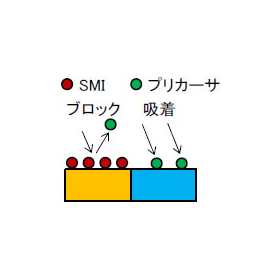X-ray diffraction method
XRD is a method for obtaining information about the crystal structure of a sample from its diffraction pattern.
- Identification of crystalline substances is possible - Evaluation of crystal size (from a few nm to 100 nm) is possible - Evaluation of crystallinity is possible - Evaluation of orientation is possible - Evaluation of strain and stress is possible - Non-destructive analysis is possible Features of the equipment - Heating analysis is possible from room temperature to 1100°C - Micro-area measurement with a beam diameter of up to 100 μm is possible - Atmosphere control is possible with N2, He, Ar, and vacuum
basic information
The "crystal" that is the subject of evaluation in XRD refers to a state in which the group of atoms, molecules, or ions that make up a substance is arranged in a three-dimensional repeating pattern. When X-rays are irradiated onto the crystal, they are scattered by the electrons within the crystal (scattered X-rays). The scattered X-rays interfere with each other, and strong diffracted X-rays are produced when the conditions of Bragg's law are satisfied. If we denote the interplanar spacing as d and the angle of incidence of the X-rays as θ, the path difference between the first and second planes is given by 2d sinθ. When the path difference is an integer multiple of the wavelength λ of the incident X-rays, the scattered X-rays reinforce each other, and Bragg's law holds true.
Price information
-
Delivery Time
Applications/Examples of results
- Evaluation of crystallinity and orientation of poly-Si, metal films, and organic films - Measurement of crystallite size of poly-Si and metal films - Crystal structure analysis of high-k films, nickel silicide (NiSi), and titanium silicide (TiSi) - Degradation evaluation of lithium-ion secondary battery electrode materials
Detailed information
-

Please consult with us first. ★We will start by proposing an analysis plan★ Meetings at your company are, of course, possible. We will carefully explain the analysis results and leave no questions unanswered. Please contact us at 03-3749-2525 or info@mst.or.jp!
-

We will hold a visiting seminar. ★ We offer free seminars with engineers tailored to our customers' needs ★ Depending on your requests, we will introduce analytical techniques and explain analytical data. ◆ Example seminar content - A broad explanation of MST's analytical methods - A thorough and detailed explanation of specific analytical methods from the principles - An explanation of the analytical data requested by the customer Please contact us at 03-3749-2525 or info@mst.or.jp!
Recommended products
Distributors
MST is a foundation that provides contract analysis services. We possess various analytical instruments such as TEM, SIMS, and XRD to meet your analysis needs. Our knowledgeable sales representatives will propose appropriate analysis plans. We are also available for consultations at your company, of course. We have obtained ISO 9001 and ISO 27001 certifications. Please feel free to consult us for product development, identifying causes of defects, and patent investigations! MST will guide you to solutions for your "troubles"!



















































